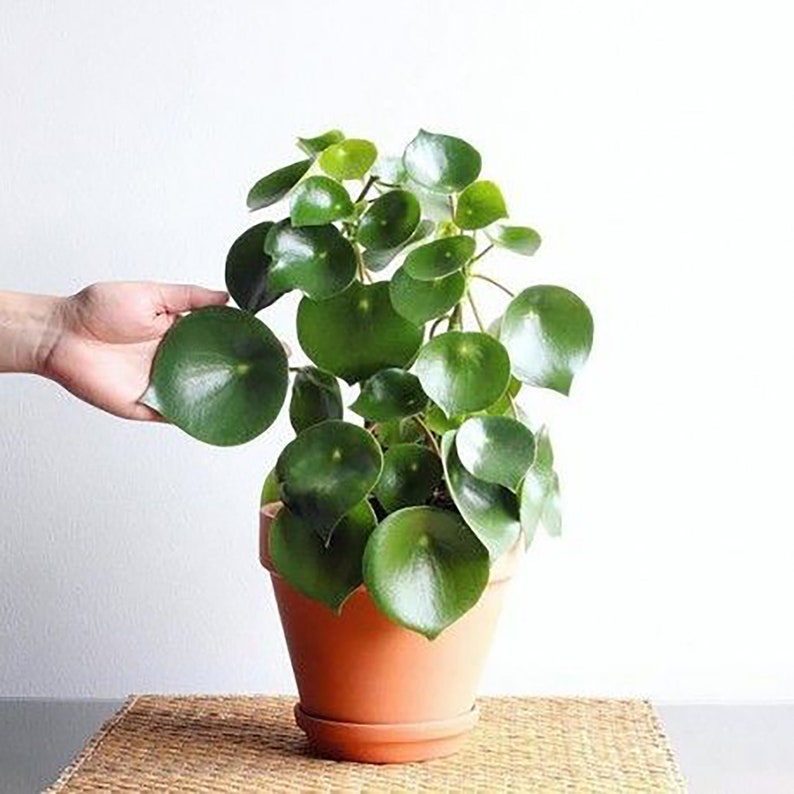
If you’d like to go the soil route, prepare a planter with the same soil mix you’d use for an adult raindrop Peperomia.

Set the whole thing in a light spot that doesn’t get direct sun and be patient! Prepare a glass or vase and place the cutting in there so that it’s about halfway submerged. To propagate a Peperomia polybotrya stem cutting in water, just remove the bottom leaves from the cutting. Propagation in soil can be slightly more challenging, with cuttings wilting sometimes before they can root. Water propagation is handy because it allows you to see the roots growing in real-time, but it has the disadvantage that you’ll still have to pot the plant later. You can propagate a stem cutting in water or soil. Stem cuttings are the most common method: just a piece off your plant that’s at least an inch or two long, has a leaf or two on top and some nodes that roots can grow out of on the stem. Propagating Peperomia polybotryaĪs with many common houseplants, multiplying a Peperomia polybotrya is a breeze. Note how the leaves on the latter are more pointed, thicker and shinier. Pilea peperomioides (top) and Peperomia polybotrya (bottom) are very similar, but there are differences. Leaves looking limp and crisping up likely means you should water a bit sooner next time. Leaves yellowing, browning and falling from the bottom up, especially combined with a mushy brown stem, means you need to uproot your Peperomia polybotrya immediately and head to the section on propagation. It should be about halfway dry before you water again.Ĭheck your plant regularly, especially if you think you may have overwatered it. Alternatively, my favorite method is to just stick my finger in the soil. Instead, feel the weight of the planter (light means time for watering, heavy means you should wait a bit longer). You shouldn’t water plants on a schedule, as soil dries out quicker or more slowly depending on the conditions. It doesn’t need that much, especially not during the winter months when it likely isn’t actively growing! When watering a sturdy Peperomia like this one, you should again keep in mind that the species can store water in its fleshy foliage. The above also means you should be careful to avoid placing your raindrop Peperomia too close to an A/C unit or drafty (single-pane) windows.

Normal room temperature is fine and a bit warmer won’t be a problem either, but try not to let things drop below around 15.5 ☌/60 ☏. TemperatureĪgain, keep the species’ natural habitat in mind! They occur in the tropics, meaning they’re not big fans of the cold. Use artificial light if you don’t have enough windowsill space. It tends to quickly grow leggy and really doesn’t look as nice as a specimen grown in bright indirect light. Your plant will probably survive in low-light conditions (further away from a window), but this is not recommended. Some rays in the early morning or late afternoon are fine, but intense afternoon sun can burn a Peperomia polybotrya. This doesn’t mean it doesn’t appreciate plenty of light in the home, though.įind your raindrop Peperomia a spot by a window that receives plenty of indirect light but not too much sun. After all, it grows in forested regions and doesn’t get very large, meaning taller trees will block out the harshest light. In its natural habitat, Pepermia polybotrya isn’t used to receiving much direct sun. Peperomia polybotrya light & temperature Light At a maximum of around 40 cm/5.5″, it’s the perfect choice for the smaller home. One natural characteristic of Peperomia polybotrya is that it doesn’t grow overly tall. Here, the species is protected from the harsh sun by taller trees, while its succulent-like leaves and stem make it more resistant. This is no different for Peperomia polybotrya, which occurs in forested areas in Colombia and Peru.

The genus Peperomia is mostly found in Central and South America, where the different species grow in tropical regions. A bunch of Peperomias are grown as houseplants, including Peperomia polybotrya, the raindrop Peperomia. Raindrop Peperomia, coin leaf peperomia, Peperomia polybotryaĪlso known as radiator plants, Peperomias are a large genus in the family Piperaceae, which also includes black pepper plants.
#RAINDROP PEPEROMIA HOW TO#
Let’s go into Peperomia polybotrya care and how to grow this plant in your home! Name(s) (common, scientific) The raindrop Peperomia is a great choice if you like larger, glossy foliage.

They’re not the same, though, as they naturally hail from completely different parts of the world. Are you getting deja vu? Normal! Peperomia polybotrya, or the raindrop Peperomia, looks a lot like the wildly popular Pilea peperomioides or Chinese money plant.


 0 kommentar(er)
0 kommentar(er)
